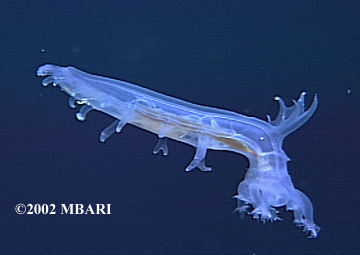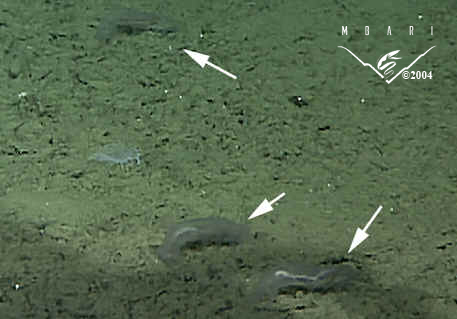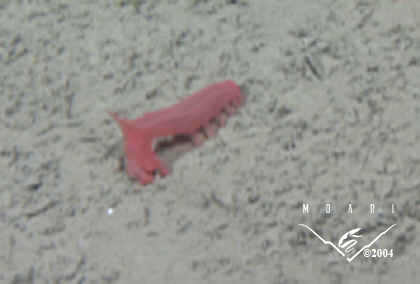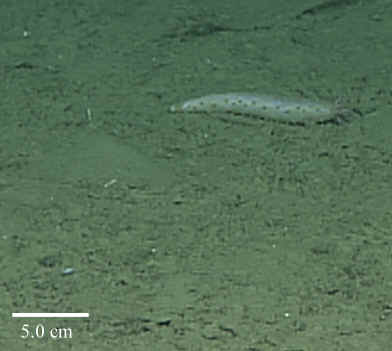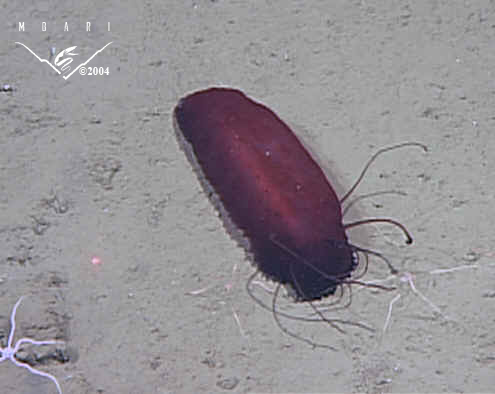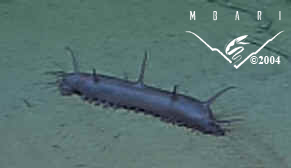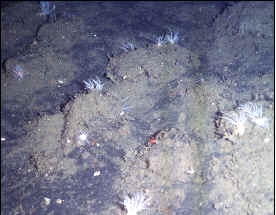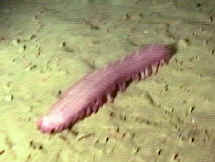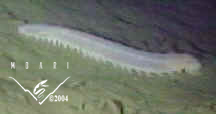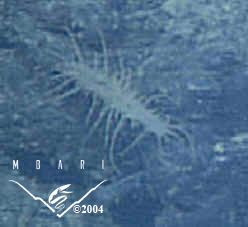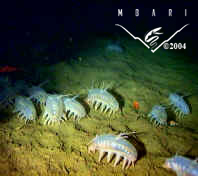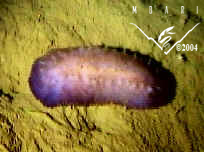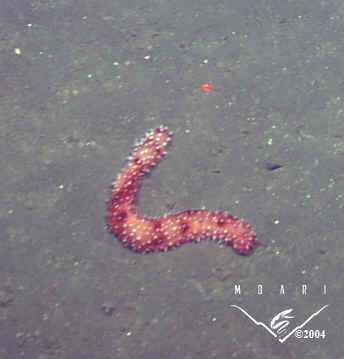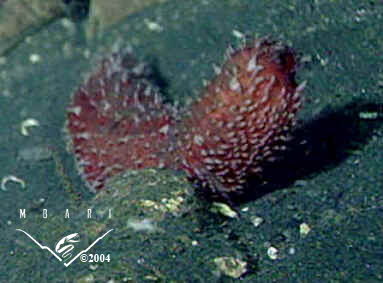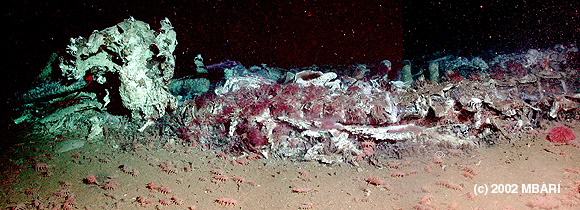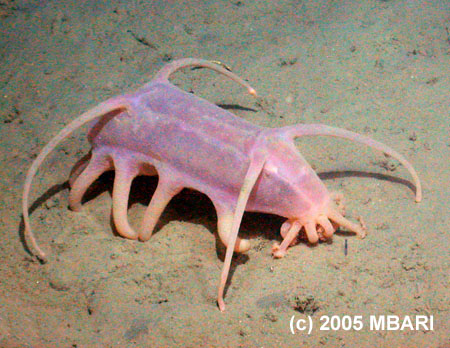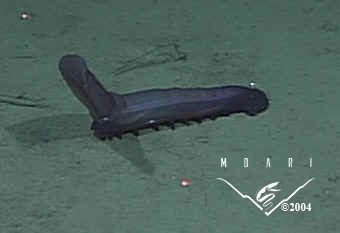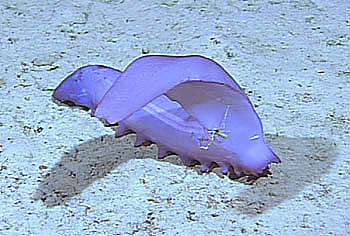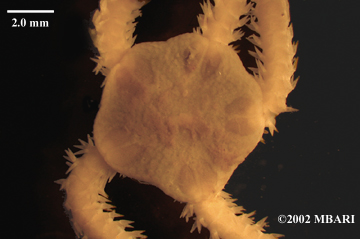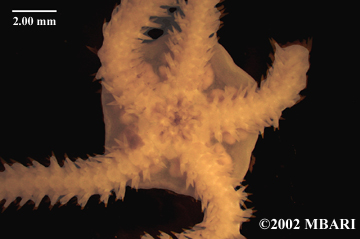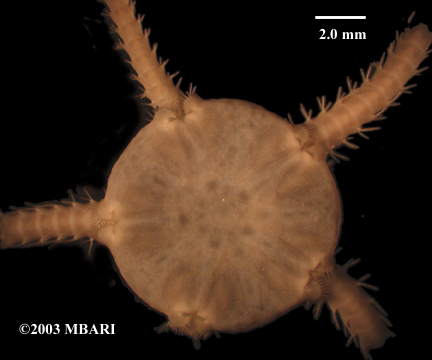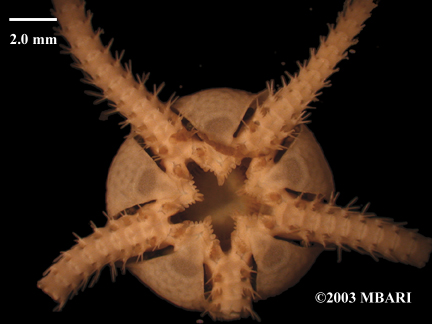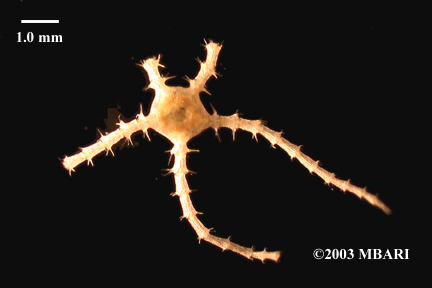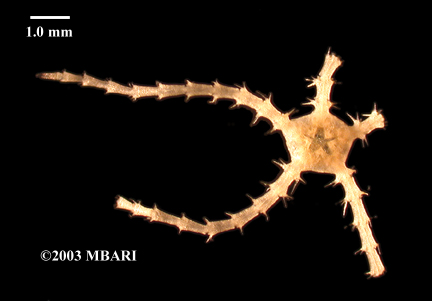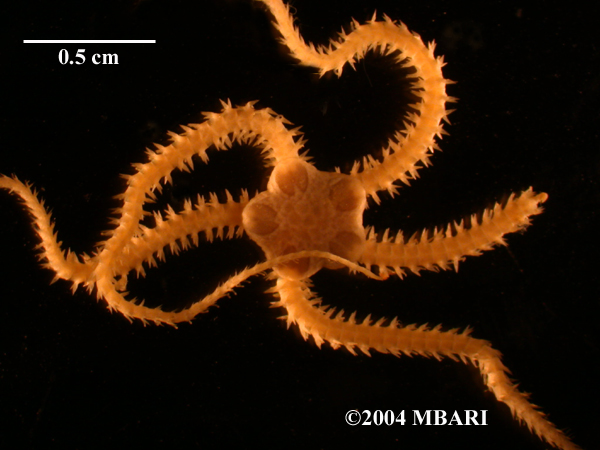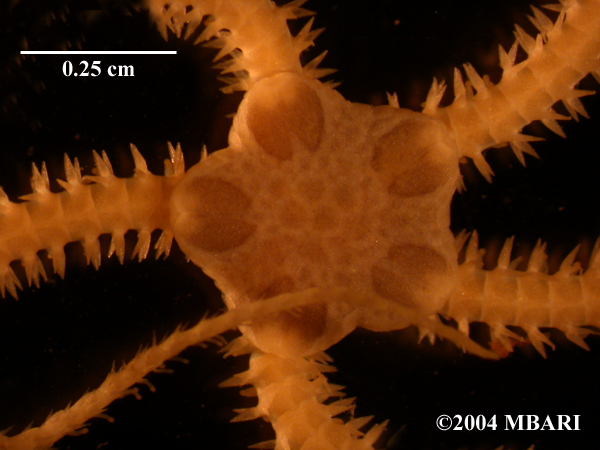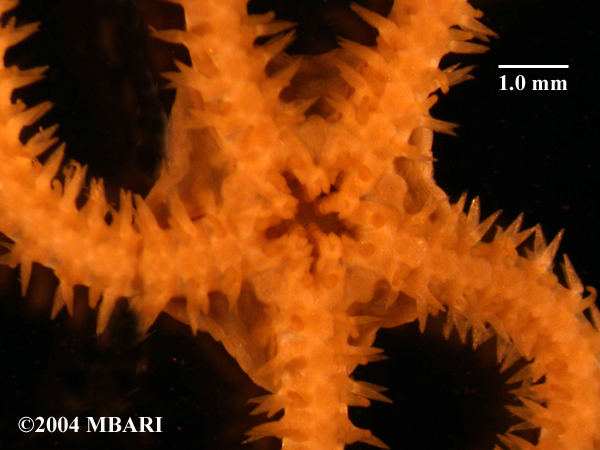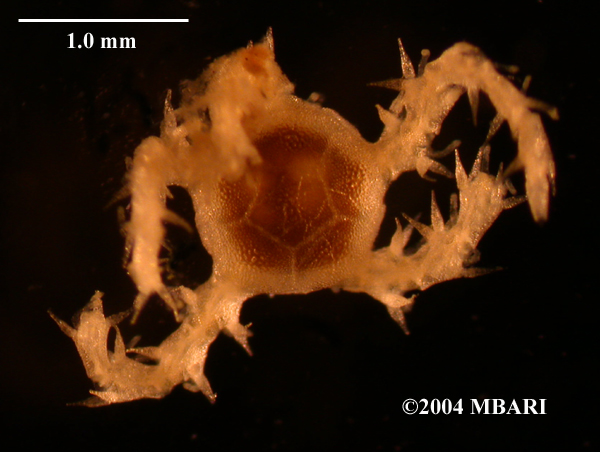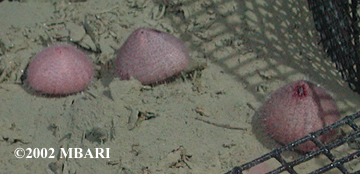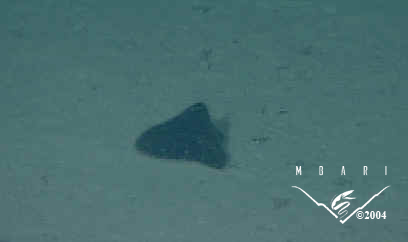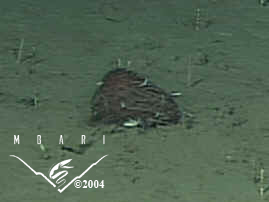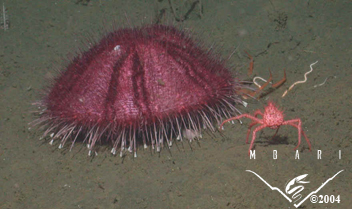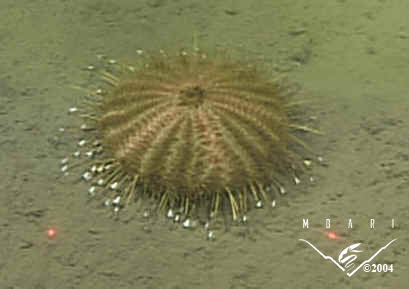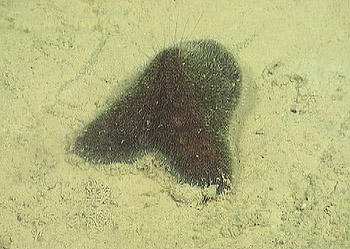 | Echinodermata and Crinoid |
|
Deep-Sea Holothurians -mid-water species (unidentified) - peniodone |
Deep-Sea Holothurians -Peniagone sp |
Deep-Sea Holothurians |
|
Deep-Sea Holothurians -Abyssocucumis abyssorum |
Deep-Sea Holothurians -Holothuian sp. 1 |
Deep-Sea Holothurians -Holothuian sp. 2 |
|
Deep-Sea Holothurians -Psolus squamatus |
Deep-Sea Holothurians -Pannychia moseleyi |
Deep-Sea Holothurians -Pannychia moseleyi |
|
Deep-Sea Holothurians -Oneirophanta mutabilis |
Deep-Sea Holothurians -Scotoplanes globosa |
Deep-Sea Holothurians -Paelopadites confundens |
|
Deep-Sea Holothurians -Parastichopus californicus |
Deep-Sea Holothurians -Parastichopus leukothele |
Deep-Sea Holothurians -Parastichopus johnsoni |
|
food |
This deep-ocean sea cucumber, Scotoplanes globosa, is sometimes called a "sea pig" because its resemblance to terrestrial pigs. Like many sea cucumbers, Scotoplanes eat seafloor mud, along with small animals and microbes that live in the mud. Scotoplanes are typically 10-15 cm (four to six inches) long. They move slowly but gracefully on their stubby "legs," and sometimes form large "herds" that migrate across the muddy seafloor or congregate around sources of food. MBARI research suggests that populations of Scotoplanes can change dramatically over time depending on how much food sinks down to the deep seafloor |
Deep-Sea Holothurians -Psychropotes longicauda |
|
One common sea cucumber at Station M is this beautifully colored species called Psychropotes longicauda, which grows from 75 to 150 mm (three to six inches) long. The head of the animal is at leftImage:(c) 2002 MBARI-http://www.mbari.org/news/homepage/2007/deepchange.html . |
Deep-Sea Ophiuroids-Amphiodia urtica (dorsal) |
Deep-Sea Ophiuroids -Amphiodia urtica (ventral) |
|
Deep-Sea Ophiuroids -Ophiura leptoctenia (dorsal) |
Deep-Sea Ophiuroids -Ophiura leptoctenia (ventral) |
Deep-Sea Ophiuroids -Ophiuroid sp. 1 (dorsal) |
|
Deep-Sea Ophiuroids -Ophiuroid sp. 1 (ventral) |
Deep-Sea Ophiuroids |
Deep-Sea Ophiuroids |
|
Deep-Sea Ophiuroids |
Deep-Sea Ophiuroids |
Deep-Sea Echinoids - Aporocidaris milleri |
|
Deep-Sea Echinoids -Cystechinus loveni |
Deep-Sea Echinoids -Echinocrepis rostrata |
Deep-Sea Echinoids -Cystocrepis setigera |
|
Deep-Sea Echinoids -Cystocrepis setigera |
TDeep-Sea Echinoids -romikosoma panamense |
Deep-Sea Echinoids -?Tromikosoma sp. |
|
Deep-sea heart urchins such as this Echinocrepis rostrata showed less dramatic population changes than did the sea cucumbers at Station M. However, their increases in abundance generally coincided with decreases in the sizes of individual animals. Ruhl hypothesizes that this may reflect "pulses" of young animals that arrived as larvae and grew up in the study area,Image:(c) 2002 MBARI |
from MBARI-http://www.mbari.org/benthic/echinoids.html
http://www.mbari.org/benthic/holothurians.html
http://www.mbari.org/benthic/ophuroids.html
ECHINODERMATA
Holothurians
Ophiuroids
Echinoids
